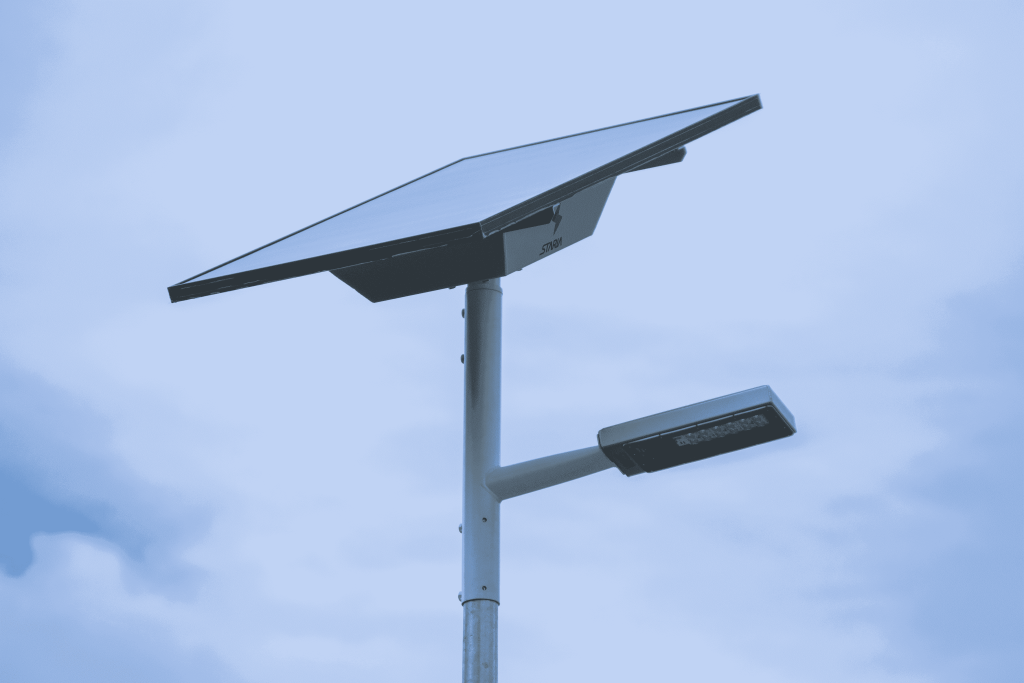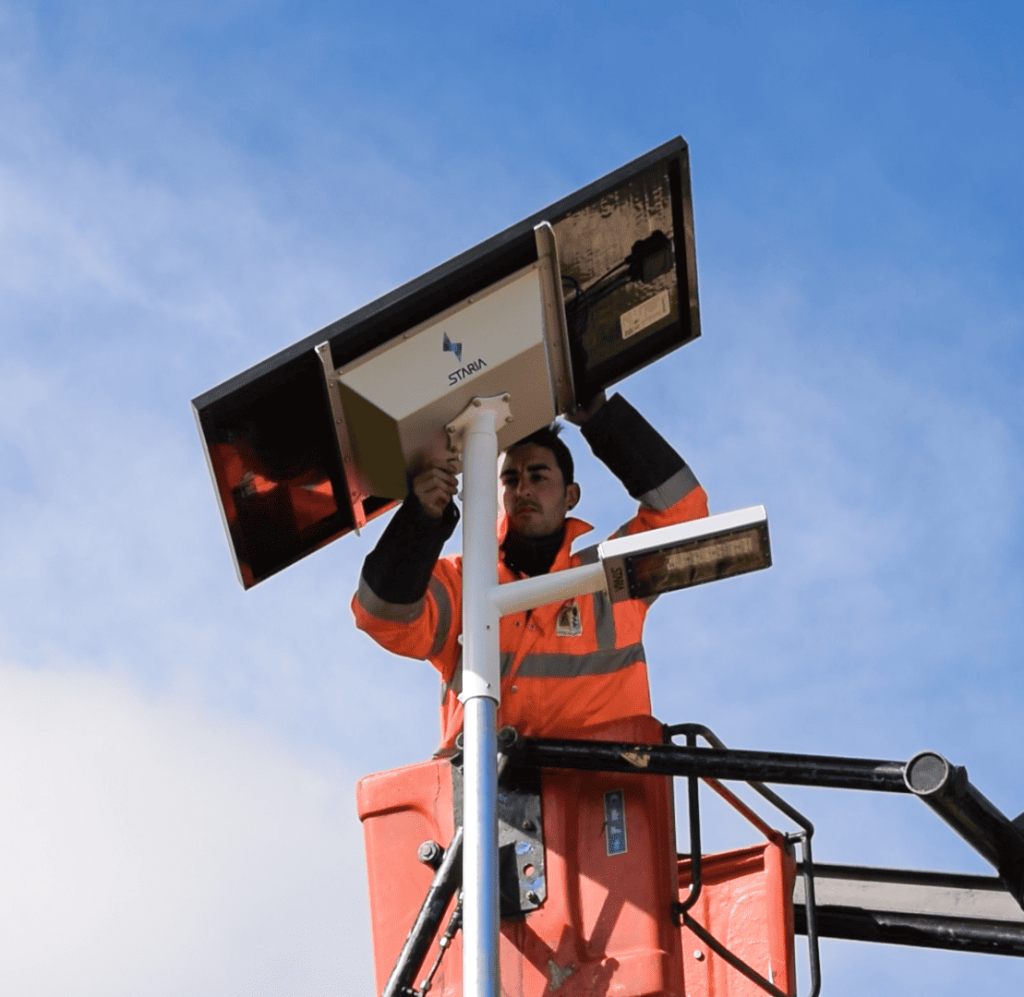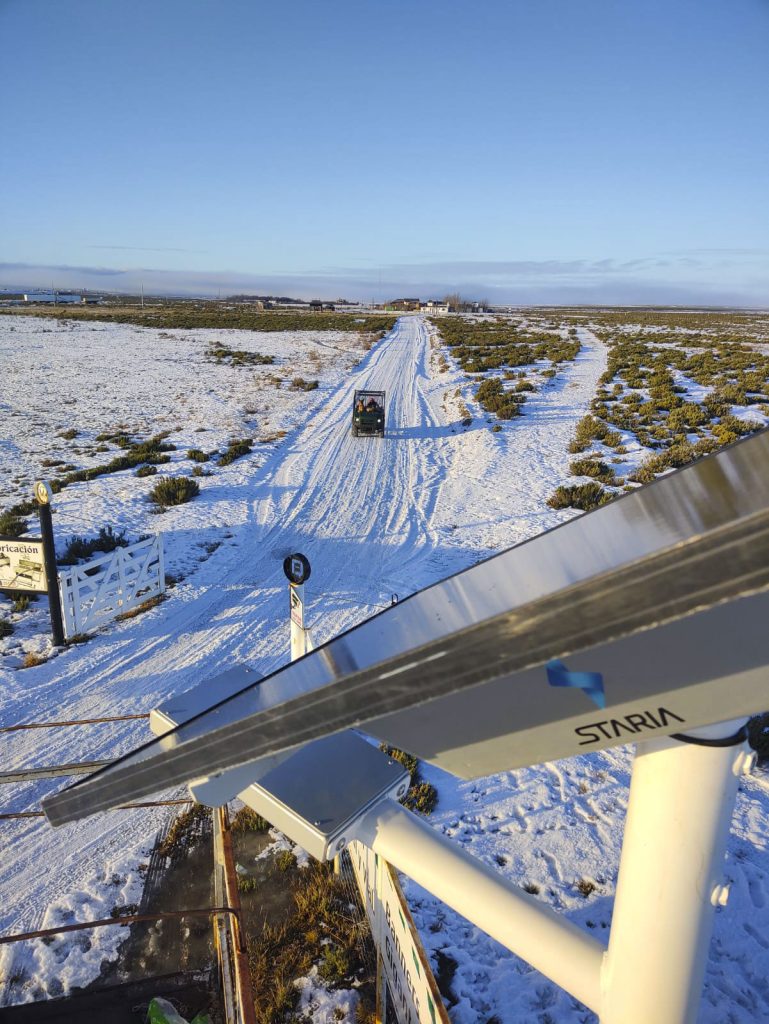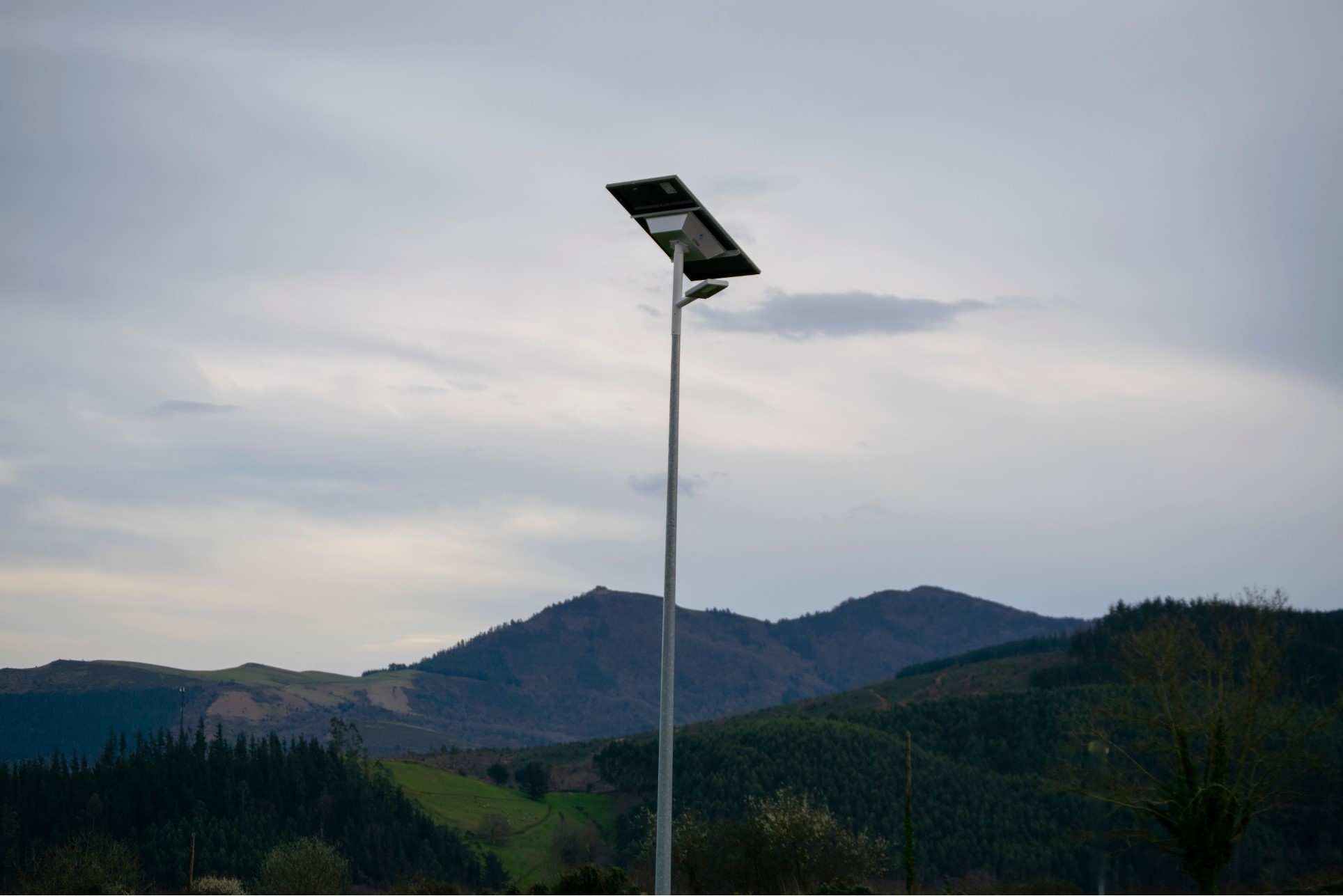April, 2025
Did you know that a solar streetlight can change the way your city consumes energy, reduce costs and improve safety?
Solar lighting is no longer a technological novelty: it is a strategic tool that many cities are adopting to drive their energy transition. In this article we explore 5 advantages of solar lighting and how they are revolutionizing sustainable urbanism.
1. Environmental sustainability and zero emissions
One of the major advantages of solar lighting is that its operation does not emit carbon dioxide. Being powered by photovoltaic energy, it completely avoids the use of fossil fuels, making it an ideal solution for cities looking to reduce their carbon footprint.
According to the World Economic Forum, the shift to clean energy in urban infrastructure is one of the key pillars for achieving climate neutrality by 2050.
At Staria, 100 of our solar luminaires can prevent the emission of up to 23 CO₂ tons in a decade, this is the equivalent of planting more than 17,000 trees. But the benefits don't stop there: it also reduces the light pollution by up to 50%
Find out how sunlight can be part of a green city: Solar Lighting: Much more than a Street Light


2. Economic savings from installation
Installing street lighting with grid connection involves high costs: ditches, manholes, wiring, electricity bills and monthly consumption. On the other hand, a solar street light is installed independently, without the need for complex civil works or electrical supplies.
This translates into savings of up to 70% in installation costs, especially in new development projects, public parks or rural areas. And the best part: the sun doesn't send bills.
In addition, maintenance is practically nonexistent during the first 10 years thanks to the use of long life LiFePO4 batteries and Energy-efficient LEDs.
3. Quick and hassle-free installation
One of the biggest problems with traditional infrastructure is the lead time. While a conventional streetlight can take weeks to be operational, Staria's solar luminaires can take weeks to be operational. se instalan en solo 24 a 48 horas.
This allows:
Quickly illuminate off-grid areas.
Respond to emergencies or special events.
Develop pilot projects without traffic interruptions.
4. Integrated intelligent technology
Solar luminaires are no longer just a source of light. Thanks to their integrated technology, the system is fully controllable:
Presence sensors that adjust the intensity according to the movement.
MPPT Controllers that optimize the solar load.
Remote telemanagement, which allows to monitor the status of the luminaires and receive alerts in case of incidents.
Possibility of integrating video surveillance or weather forecasting at strategic points.
This type of solution is part of the concept of smart lighting, indispensable in the so-called “smart cities”.
What should a quality solar luminaire have?
Solar street lighting luminaires: what makes a quality luminaire?
5. Flexibility in urban design
The design of modern solar luminaires is modular and adjustable, which allows them to be easily adapted to all types of environments: avenues, squares, promenades, parking lots, rural roads or industrial areas.
Models such as the SAT70 or the INFINITY 340 from Staria's lighting systems feature adjustable brackets, customizable colors and different power and autonomy configurations. In addition, the independence from the electrical grid allows space planning without worrying about the previous infrastructure.
This not only reduces the complexity of urban development projects, but it also streamlines the design and execution process, freeing resources for other areas of municipal development.

Conclusion: a strategic decision for smart cities
Solar lighting is no longer a secondary solution, it is a strategic tool to transform cities: greener, more autonomous, more efficient. With its economic, environmental and operational benefits, it is the best option to meet today's energy and urban challenges.
At Staria Technologies we take this transformation one step further, combining design, technology and real environmental impact. Whether you manage a public or private project, now is the best time to change the way you light your spaces..

